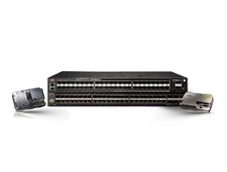FTTx using Ethernet PON
Expanding your access network in increase capacity
For service providers that want to offer symmetrical and multi-gigabit downstream services to residential customers, deploying an Ethernet passive optical network (EPON) with a centralized or distributed architecture delivers ease of integration for their existing network.
By utilizing EPON with fiber to the home (FTTH), service providers can lower operational costs, maximize their investments and increase revenue with high-value commercial services customers.
Why CommScope?
![]()
Global Distribution
CommScope operates more than 30 manufacturing and distribution facilities around the world to make sure you can get what you want on time and on budget.
Award-winning solutions
Even though our ultimate goal is to design and create solutions that improve your network, we’re honored when industry experts recognize the intelligence and creativity we put into our solutions.
![]()
An authority on fiber
As an expert and innovator in fiber optics, CommScope has the knowledge and advanced solutions to help any network dominate the fiber future.
Featured resources
Powering PON with HFC, a hybrid for a new generation
White Paper
This paper provides a brief overview on various passive optical network (PON) configurations along with comparisons on compatibility, as well as deployment and operational costs.


Addressing capacity and performance with fiber deep architecture and the POD methodology
Case Study
Service providers can see cost and deployment time savings by utilizing the CommScope Professional Services methodology of planning and design, offsite build-out, and delivery and on-site integration.
Optimizing PON architectures maximizes electronics efficiencies
White Paper
When deploying FTTH networks, operators need to pay attention to network take rates to define the breakeven point between network construction and revenue generated by the total number of customers paying for service.


HFC transformation to FTTP: The role of RFoG, PON and hybrid solutions
White Paper
The paper takes a look at HFC networks and offers insights into transitioning business strategies and network capacity requirements over the next 10-20 years.
Additional resources
-
Download
HFC Transformation to FTTP: The Role of RFoG, PON, and Hybrid Solutions
Description: How long will HFC last? What strategies can be deployed to help extend the life of HFC through this transition period? The authors provide insight into the network capacity requirements over the next 10-20 years and what must happen for a smooth transition. Topics include capacity planning, a DOCSIS 3.1 overview, Hybrid PON, scaling considerations, and more.
-
Download
HFC Transformation to FTTP: The Role of RFoG, PON, and Hybrid Solutions
Description: How long will HFC last? What strategies can be deployed to help extend the life of HFC through this transition period? The authors provide insight into the network capacity requirements over the next 10-20 years and what must happen for a smooth transition. Topics include capacity planning, a DOCSIS 3.1 overview, Hybrid PON, scaling considerations, and more.



